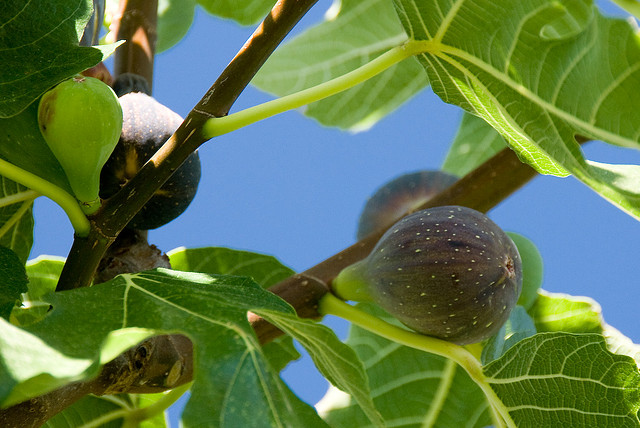Trapped in a Fig: The Perils and Payoffs of Pollination
Pollinating insects are an industrious bunch, working tirelessly as they flit from blossom to blossom. But for insects like the short-lived, fig-pollinating wasp, the job of bringing fruit to fruition can be a dangerous business. According to a recent PLOS ONE study, some wasps can get trapped and die in the fig during pollination, when they enter to deposit their eggs. The researchers find that wasps of a certain size may take this risk into account when deciding which figs to approach.
Choosing which fig to pollinate is not like shopping at the supermarket, where items are placed in convenient, easy-to-reach places. Though the fig tree can produce fruit all year around‒much like the availability of items in a supermarket‒its flower is wrapped inside the fruit and only accessible via a small slit. Only pollinators of a certain size can enter these openings, and as the fruit ages, it may become increasingly difficult to get in and out.
In the study, the researchers sought to determine whether the fruit’s age had any correlation with successful entry, and whether the wasp’s size correlated with successful entry. To do this, they first selected fig trees whose fruit were just mature enough to attract pollinators. Then they selected and collected groups of fig-pollinating wasps and placed them in a sealed enclosure with the figs. After one day, they counted how many wasps were still alive and how many had died. They also checked to see how many wasps had successfully entered figs and how many had gotten stuck. Using the same selection process, the researchers ran an additional experiment using fig fruit of various ages.
While not every wasp attempted to enter a fig during the experiment, those that did make the attempt met with various challenges based on their size and the age of the fruit. The researchers found that wasps attempting to enter older figs tended to take longer to reach the flower than wasps that tried with younger figs. Their findings also indicated that the proportion of wasps that got trapped in the opening increased with fig age. In other words, the older the fruit was, the more likely a wasp would get stuck. The proportion of wasps that reached the flower decreased with fig age.
After measuring the size of the wasps’ heads, the researchers noted that wasps who couldn’t penetrate the fruit tended to have wider heads than other wasps. Wasps who made the attempt but got stuck and those that made it to the flower tended to have narrower heads than others.
The researchers hypothesize that the relationship between fig fruit age, wasp size, and successful entry indicates that a particular partnership has formed between this fruit and its pollinator. The small opening in the fruit may act as a sort of filter or barrier to encourage wasps to pollinate younger, more fertile fruit. Attempts to enter older fig fruit may reduce the number of wasp offspring and may even lead to death!
The next time you bite into a fig bar or wish for figgy pudding, take a moment to appreciate the intricate relationship between the wasp and this fruit. To learn more about this research, buzz over to the full study.
Citation: Liu C, Yang D-R, Compton SG, Peng Y-Q (2013) Larger Fig Wasps Are More Careful About Which Figs to Enter – With Good Reason. PLoS ONE 8(9): e74117. doi:10.1371/journal.pone.0074117
Image: Fresh figs by David Blaikie.
Image: Common Wasp by Sid Mosdell.


